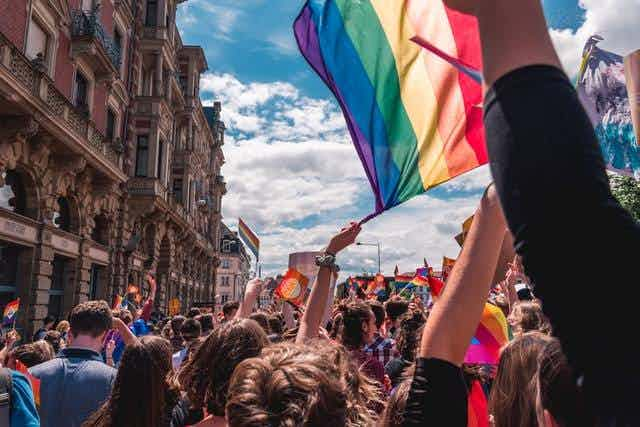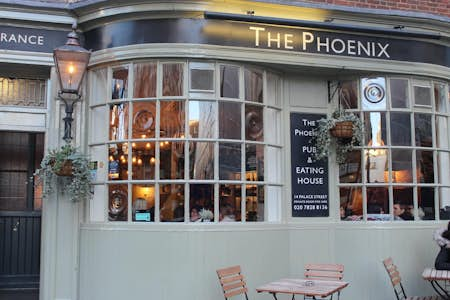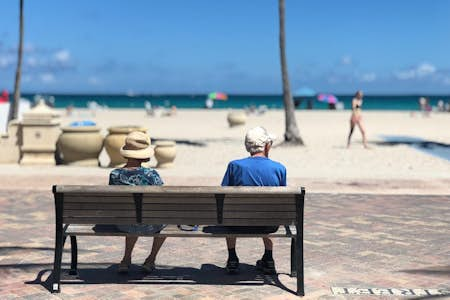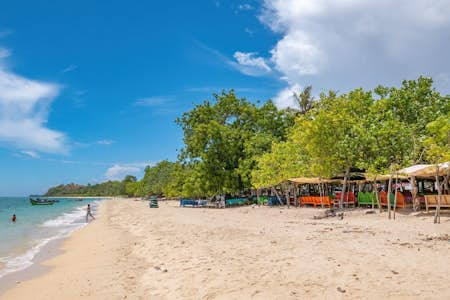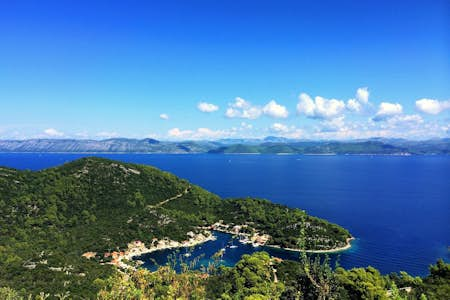Europe has an array of different landscapes, landmarks, cultures, and people, with massive variation across the continent. There is truly something for everyone in Europe, but where are the best destinations for LGBTQ+ people? Attitudes and cultures vary around Europe, but whether you’re travelling alone, with your significant other or with LGBTQ+ friends, there are plenty of incredible sights and experiences to be had in Europe.
Whether you're looking for a solo holiday, an adults-only getaway, or an all-inclusive package for the whole family, our selection of holiday providers has you covered. Click below to start your holiday search!
Being LGBTQ+ in Europe
Europe is generally considered to be a safe place for LGBTQ+ people to live and travel. Being gay or transgender isn't illegal anywhere in Europe; however, there are different levels of social acceptance and other legal rights depending on where you go. If you're an LGBTQ+ person travelling to Europe, ILGA Europe is a great place to start your research. They release Rainbow Europe rankings every year, rating countries based on various categories, including equality and non-discrimination, hate crimes and gender recognition. The 49 European nations are each given a percentage score that indicates the rights and acceptance of LGBTQ+ people.
With any destination you're considering, it's worth doing some research beforehand to learn about local attitudes and customs that might affect you as a traveller. In general, North and Western Europe are more progressive, while Eastern Europe tends to be more conservative. In May 2021, Malta, Belgium and Luxembourg were the best scoring countries on the Rainbow Index, while the lowest were Azerbaijan, Turkey and Armenia.
Where should I visit?
Europe has a vast amount to offer, with pieces of LGBTQ+ history around almost every corner. Whether you prefer a hot or cold holiday, beaches or city breaks, there will undoubtedly be something in Europe for you. We've selected five of the top destinations to visit in Europe for LGBTQ+ travel.
Berlin, Germany
Berlin is considered by many to be the LGBTQ+ capital of Europe, with a large gay community and rich LGBTQ+ history throughout the city. While many LGBTQ+ young people flock to Berlin for its nightlife and parties, that certainly isn’t all Berlin has to offer. Berlin CSD (the city’s annual Pride event) brings half a million travellers to the city each year and is one of the largest in Europe. Taking place in late July, the celebrations are focused on Christopher Street, the gay neighbourhood, but it spreads to most corners of the city. The event features a parade that ends at Brandenburg Gate, where they hold a large live concert to end the parade. There is also a smaller Pride parade on the same day called Kreuzberg Pride, which is smaller and has a more local and relaxed atmosphere. So, if live music and big crowds aren’t for you, this smaller event offers a great alternative to celebrate in a more chilled environment.
Berlin culture also has lots to offer for LGBTQ+ people. There are plenty of art galleries and museums around Berlin, but The Bowery and The Coven regularly showcase up-and-coming LGBTQ+ artists. The Schwules Museum was the first LGBTQ+ museum in the world when it opened in 1985. It continues to boast impressive exhibitions and collections dedicated to LGBTQ+ history. The archive holds over 1.5 million items that document gay history and culture – it's not one to miss! The monument to the LGBTQ+ victims of the Holocaust is also one not to miss. Situated opposite the memorial to the murdered Jews of Europe, it is a poignant tribute to some of the darkest days for the community.
While there are countless gay bars in Berlin, most of them won’t be on the list of older travellers. However, there are plenty of evening activities even if clubbing isn’t your scene anymore. The Club hosts club nights and drag shows with a welcoming atmosphere any time of day. Facciola is a lesbian-owned wine bar in Kreuzberg that hosts cabaret opera events, which are also a highlight for many older travellers.
Dublin, Ireland
Many don’t think of Dublin or Ireland as an LGBTQ+ destination, but it has plenty to offer travellers of all ages. Particularly if you’re interested in the arts, Dublin has a thriving LGBTQ+ arts scene that rivals many other European cities. One of the most famed Dublin figures is Oscar Wilde. For fans, visiting his memorial statue in Merrion Square Park is highly recommended. It is situated opposite his childhood home, which you can also see on the square. For other literary sites, look at the Dublin Writers Museum, which documents the traditions and history of Dublin’s various famed writers, including Oscar Wilde, James Joyce and Brendan Behan.
For LGBTQ+ history, the Irish Queer Archive at the National Library of Ireland is not to be missed. It is home to the most extensive collection of items from LGBTQ+ history in Ireland. It's also just down the road from Dublin Castle, where the result of the Marriage Equality referendum was announced in May 2015, making equal marriage law across the country.
Like most major European cities, Dublin also has a pride festival. It is the largest festival in the city and second only to St Patrick's Day in terms of turnout. The festival occurs in June each year and involves parties, events, museum tours and more celebrating the LGBTQ+ community in the city. Dublin also hosts the GAZE International LGBTQ+ Film Festival in the autumn and the International Dublin Gay Theatre Festival in the Summer.
Amsterdam, Netherlands
Amsterdam is among the most accepting cities globally and has championed LGBTQ+ rights for many years. The city was home to some of the world's first gay bars in the 1910s – with Café 't Mandje still open to this day – and in 2001, the Netherlands became the first country to legally recognise gay marriage. If you're LGBTQ+, Amsterdam will welcome you with open arms.
The gay district in the city is called Reguliersdwarsstraat, which is located just outside the city centre. It has a vast range of gay bars, clubs, shops, and cafes. A short walk north is the Homonument, a pink triangle memorial to the LGBTQ+ people persecuted during World War II. It has been there since 1987 and was the first gay memorial in the world. It is also next to Pink Point, the city's official information kiosk for LGBTQ+ people.
Amsterdam also has a library and archive dedicated to LGBTQ+ history called Homodok-Lesbisch Archief (IHLIA LGBT Heritage). It's the most extensive collection of LGBTQ+ history in Europe, with over 100,000 books, journals, magazines, films, documentaries, photographs and objects. The Vrolijk Gay and Lesbian Bookshop is a much-loved bookshop dedicated the LGBTQ+ works which cover a vast range of topics, including religion, cinema, psychology and theatre.
Vienna, Austria
Vienna is home to some of the most amazing architecture Europe has to offer and a thriving LGBTQ+ scene and culture. While it can be more expensive than other European cities, it's well worth visiting. Vienna's Museums Quarter has a range of fascinating museums, but the KunstHaus Wien is known for regularly showcasing LGBTQ+ exhibitions and queer artists from around the world. While Vienna doesn’t have a specific gay neighbourhood or street like other European cities, Naschmarkt is surrounded by key LGBTQ+ hotspots. Naschmarkt is an open-air food market in central Vienna, which is neighboured by LGBTQ+ cafes like Café Willendorf and the Café Savoy, which is in a breath-taking building opened in 1896, where it has become one of the longest-running Viennese LGBTQ+ coffee houses.
Vienna is famous for its balls, which happen all year round and are extravagant, formal affairs that tourists love to experience. Two main LGBTQ+ balls now happen annually: the Loveball and the Rainbow Ball. The Loveball is held at the WUK art and culture centre on the 31st December, giving LGBTQ+ people the perfect way to weclome the new year in style.
Vienna is also one of the few cities with a dedicated sports club for LGBTQ+ people, which is well worth visiting if you’re a sports fan. Serve Vienna hosts volleyball, football (both a women’s league and an all-genders league), tennis, badminton and basketball.
Valletta, Malta
This year, Malta topped the Rainbow Index for the most LGBTQ+ friendly city in Europe – and when you visit, you’ll see why. Malta has one of the most accepting cultures in the world, and you’ll feel safe anywhere on the island. If you’re not one for city breaks, Malta offers a relaxed lifestyle, beautiful landscapes and glorious weather.
The island doesn't really have a gay neighbourhood, but the capital city, Valletta, is home to many of the LGBTQ+ bars and clubs. The city is just 900 by 600 metres with a population of under 6,000 people, so it's perfect for those who like the small-town life. Valetta has several gay walking tours you can sign up for, so you can learn more about Malta's rich, diverse history and its LGBTQ+ community.
While there are fewer LGBTQ+ specific activities in Malta, it’s the perfect destination to go with your partner or some friends. Bordered by picturesque beaches, Malta is sunny around 300 days a week, so it's a great place to slow down, recharge and work on your tan. Maltese people and tourists are known for being friendly, so don't be afraid to connect with people and make some more friends while you're there, without worrying about unaccepting attitudes towards LGBTQ+ people.

